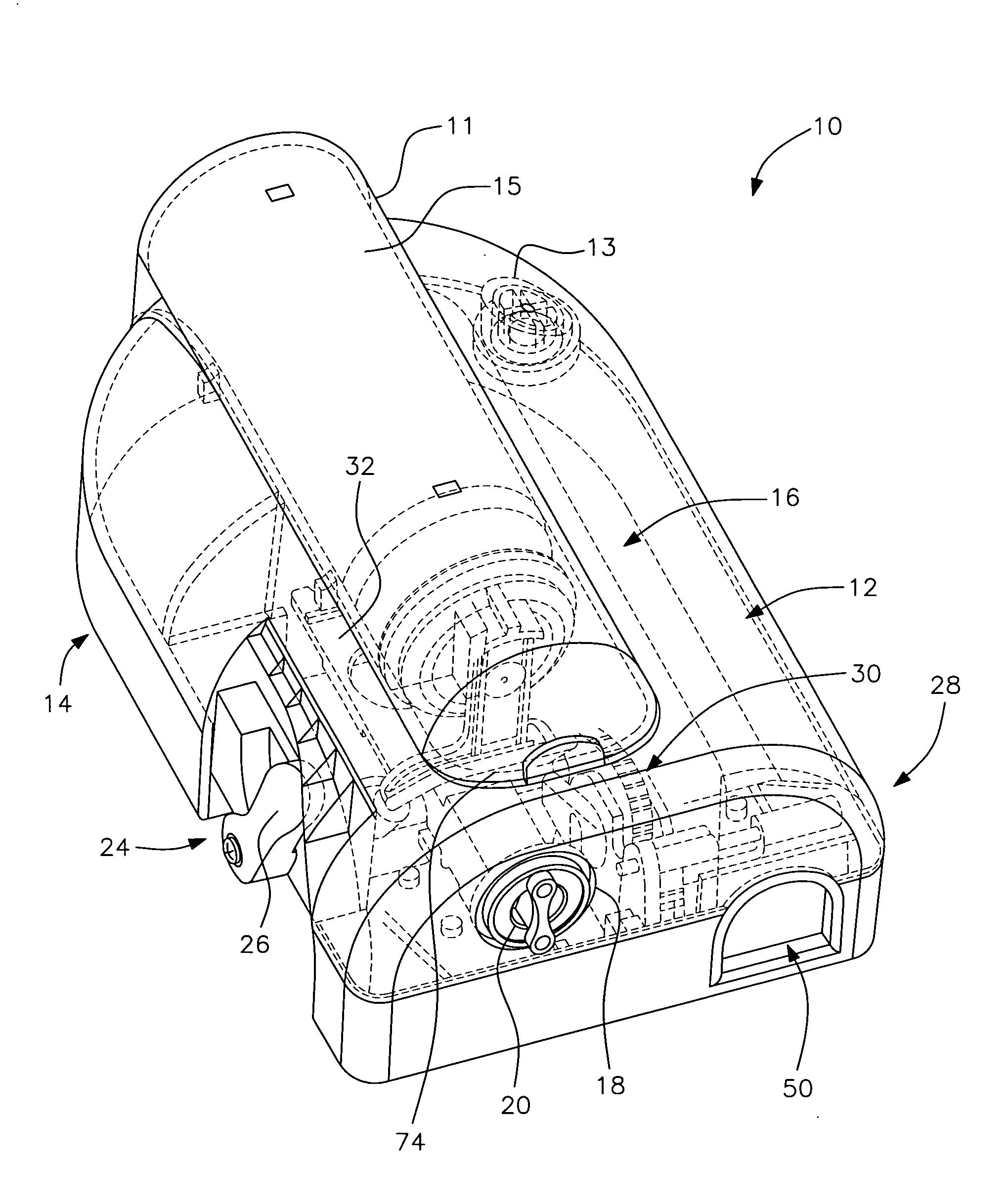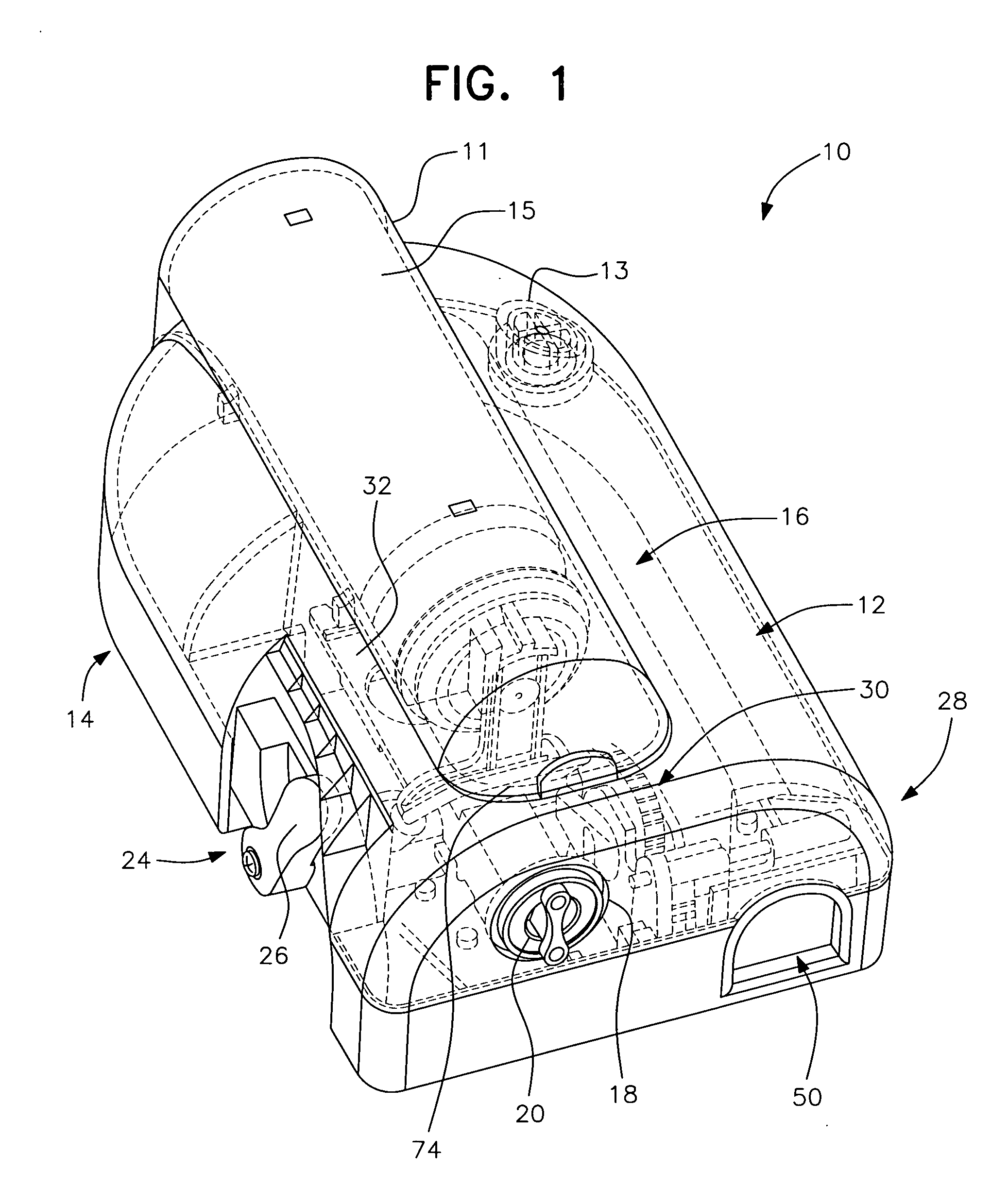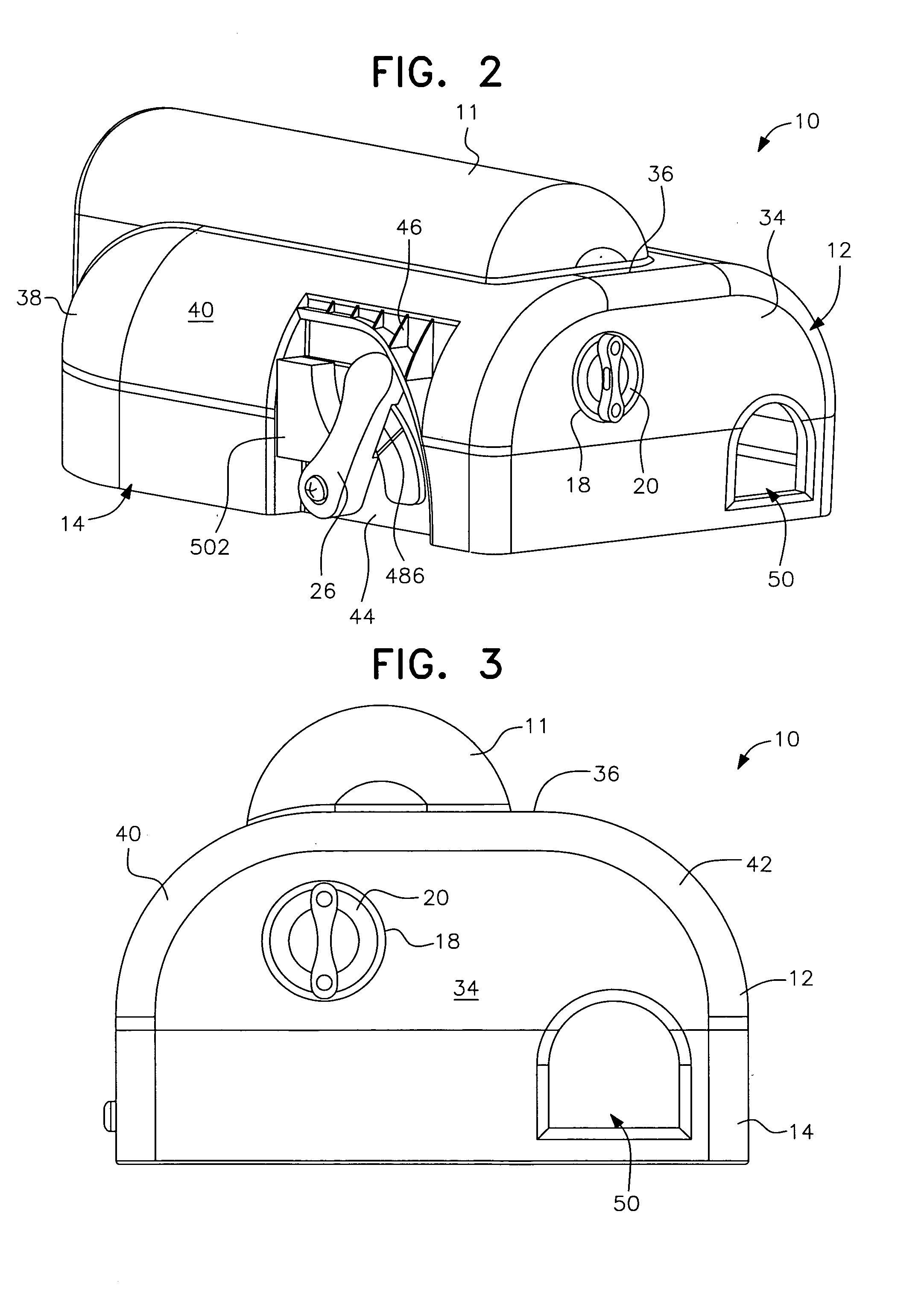Single use hermetically sealing mousetrap with internal carbon dioxide killing mechanism
a carbon dioxide and mousetrap technology, applied in the field of single-use mousetraps, can solve the problems of affecting the safety of humans and pets, the danger of snap traps, and the danger of rodents in the trap, and achieve the effects of facilitating the sanitary disposal of dead rodents, simple construction, and convenient us
- Summary
- Abstract
- Description
- Claims
- Application Information
AI Technical Summary
Benefits of technology
Problems solved by technology
Method used
Image
Examples
Embodiment Construction
[0062]Although only one preferred embodiment of the invention is explained in detail, it is to be understood that the embodiment is given by way of illustration only. It is not intended that the invention be limited in its scope to the details of construction and arrangement of components set forth in the following description or illustrated in the drawings. Also, in describing the preferred embodiments, specific terminology will be resorted to for the sake of clarity. It is to be understood that each specific term includes all technical equivalents which operate in a similar manner to accomplish a similar purpose.
[0063]As shown in FIG. 1, the present invention is directed to an enclosed hermetically sealing mousetrap for rodents generally designated by reference numeral 10. The trap includes an upper housing generally designated by reference numeral 12 and a lower housing generally designated by reference numeral 14 that are sealed together to define an enclosure generally designat...
PUM
 Login to View More
Login to View More Abstract
Description
Claims
Application Information
 Login to View More
Login to View More - R&D
- Intellectual Property
- Life Sciences
- Materials
- Tech Scout
- Unparalleled Data Quality
- Higher Quality Content
- 60% Fewer Hallucinations
Browse by: Latest US Patents, China's latest patents, Technical Efficacy Thesaurus, Application Domain, Technology Topic, Popular Technical Reports.
© 2025 PatSnap. All rights reserved.Legal|Privacy policy|Modern Slavery Act Transparency Statement|Sitemap|About US| Contact US: help@patsnap.com



